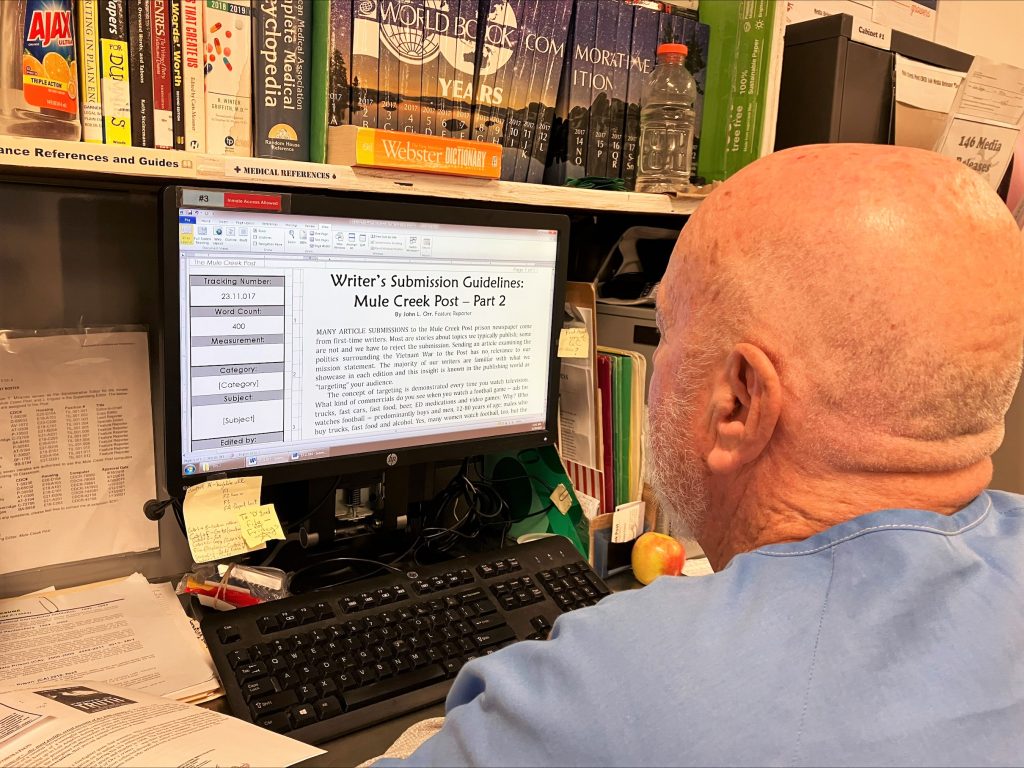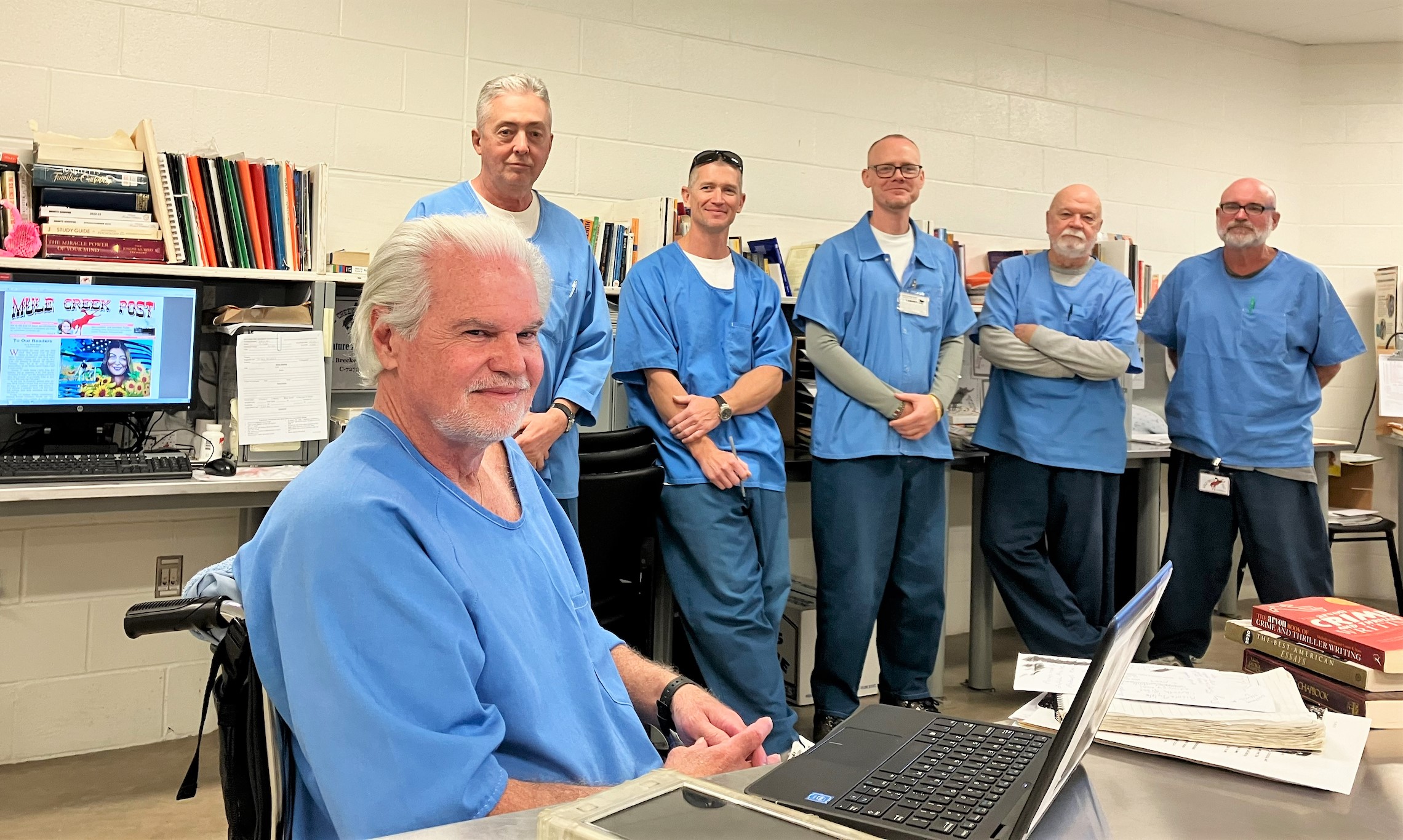(Editor’s note: Inside CDCR visited the staff at the Mule Creek Post, a newspaper covering the community at Mule Creek State Prison.)
In a converted classroom in the level II Mule Creek State Prison Infill Complex, changes are happening for incarcerated writers and editors.

Like any other small news gathering organization, the Mule Creek Post writes about their community.
Staff oversight is provided by Associate Warden Teauna Miranda and Correctional Counselor Erica Albertson.
(Read an earlier article on Albertson.)
The incarcerated newspaper staff say they are appreciative.
“Miss Albertson has been instrumental in helping us,” said Alan Rice, the Post’s copy editor. “She keeps us in communication with the Associate Warden.”
Rice, who has been incarcerated for nearly four decades, said he enjoys working on the paper.
“I was 29 when I was arrested so I had a life before I got here,” he said. “This is the first job I’ve had that I look forward to going to.”
Jason Davis agrees.
“I’ve always been interested in working with my hands,” Davis said. “Every day for me, it’s a challenge (but) it’s fun to see a finished product.”
David “Razor” Babb is the founding editor of the newspaper, created in 2018. He’s also a published author.
Mule Creek Post staff: Words have power
The newspaper staff have common themes when describing their work: Writing, reading, and creating are all ways of improving their situations.
“The thing about writing is your imagination takes you beyond your restrictions,” Babb explained.
Writing is also a way to prepare yourself for a career, whether someone is getting paroled or is still incarcerated.
“You can build a career as a writer even on the inside,” he said.
Teaching others how to write is a winning situation for all concerned.
“We try to help guys get out of prison,” Rice said. “We help them learn how to get out.”
Covering the community: ‘Change happens in here’
Jesse Carson, the newspaper’s editor-in-chief, said just like newspapers outside, they are covering their community inside. The newspaper staff agrees it’s important for the public to learn about what’s happening inside California prisons.
“We’re writing about life in our community,” Carson explained. “Change happens in here.”
Trauma and stress are part of being incarcerated.
“People outside and inside need to read about (what’s happening). It’s being written by guys who are going through it,” Rice said.
For Marty Williams, writing is one more way to express creativity.
“Writing is different. I’m an artist and play instruments. I love working here and being around smart people,” Williams said. “We also write stories about staff. We hope staff are proud of what we do.”
By Don Chaddock, Inside CDCR editor
Office of Public and Employee Communications

Read more rehabilitation stories.
Learn more about the California Model on the CDCR website.
Follow CDCR on YouTube, Facebook, X (formerly Twitter). Listen to the CDCR Unlocked podcast.
